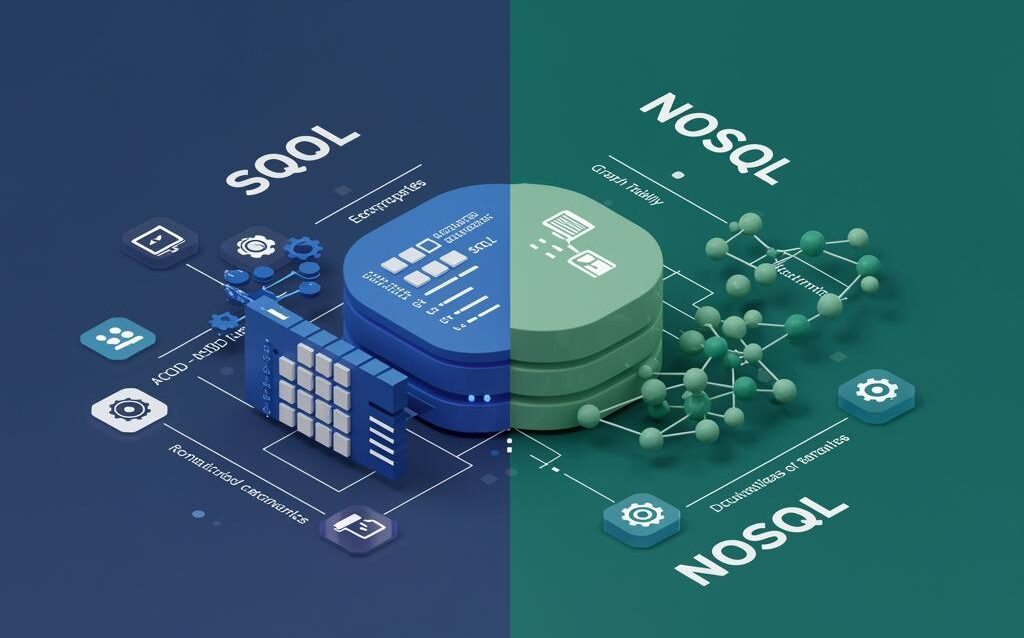SQL vs NoSQL: Choosing the Right Database for Your Project
SQL vs. NoSQL: Choosing the Right Database for Your Project
Selecting the right database is a crucial decision that can significantly impact the performance, scalability, and maintainability of your application. The two main categories of databases are SQL (Relational) and NoSQL (Non-Relational). Both have their strengths and weaknesses, making one a better fit than the other depending on the specific use case. This blog post will delve into the key differences between SQL and NoSQL databases and provide guidance on choosing the best option for your project.
Understanding SQL Databases
What are SQL Databases?
SQL databases, also known as relational databases, store data in structured tables with rows and columns. They adhere to a predefined schema, ensuring data consistency and integrity. SQL (Structured Query Language) is used to interact with these databases, allowing you to query, insert, update, and delete data.
Key Characteristics of SQL Databases:
- Relational: Data is organized into tables with relationships defined using foreign keys.
- ACID Properties: Atomicity, Consistency, Isolation, and Durability ensure reliable transactions.
- Structured Schema: Data must conform to a predefined schema, ensuring data integrity.
- SQL Language: Standardized query language for data manipulation and retrieval.
- Scalability: Typically scaled vertically (increasing resources of a single server).
Use Cases for SQL Databases:
SQL databases are well-suited for applications requiring strong data consistency, complex relationships, and reliable transactions. Here are some common use cases:
- Financial Applications: Banking, accounting, and e-commerce systems require ACID compliance to ensure accurate financial transactions.
- Inventory Management: Tracking inventory levels, managing orders, and maintaining product catalogs benefit from the structured nature of SQL databases.
- Customer Relationship Management (CRM): Storing and managing customer data, interactions, and sales information.
- Content Management Systems (CMS): Many CMS platforms rely on SQL databases to store and manage website content, user data, and settings.
Exploring NoSQL Databases
What are NoSQL Databases?
NoSQL databases are non-relational databases that offer more flexibility in data storage and schema design. They come in various types, each with its own strengths and weaknesses. Common NoSQL database types include document databases, key-value stores, column-family stores, and graph databases.
Key Characteristics of NoSQL Databases:
- Non-Relational: Data is not stored in tables with predefined relationships.
- Flexible Schema: Data can be stored without a strict schema, allowing for more flexibility and agility.
- Scalability: Typically scaled horizontally (adding more servers to the cluster).
- Variety of Data Models: Supports document, key-value, column-family, and graph data models.
- BASE Properties: Basically Available, Soft state, Eventually consistent (contrasting with ACID).
Use Cases for NoSQL Databases:
NoSQL databases are ideal for applications that require high scalability, flexible schemas, and the ability to handle large volumes of unstructured or semi-structured data. Here are some common use cases:
- Social Media: Storing user profiles, posts, connections, and activity streams.
- Big Data Analytics: Processing and analyzing large datasets from various sources.
- Internet of Things (IoT): Storing and processing data from sensors and devices.
- Mobile Applications: Handling user data, preferences, and application state.
- Real-time Data Processing: Analyzing and responding to real-time data streams, such as clickstreams or sensor data.
Key Differences Summarized
Schema Flexibility
The schema is a fundamental difference. SQL databases *require* a predefined schema. NoSQL databases offer schema flexibility, allowing you to store data without a strict schema. This flexibility is advantageous when dealing with evolving data structures or when you don’t know the schema upfront. However, schema-less designs can lead to data inconsistencies if not managed carefully.
Scalability
SQL databases typically scale vertically, meaning you increase the resources (CPU, RAM, storage) of a single server. This approach has limitations. NoSQL databases are designed for horizontal scalability, allowing you to distribute data across multiple servers. This makes them well-suited for handling large volumes of data and high traffic loads.
Data Consistency
SQL databases prioritize data consistency, ensuring that all transactions adhere to the ACID properties. NoSQL databases often prioritize availability and performance over strict consistency, adopting a BASE approach. This means that data may not be immediately consistent across all nodes in the system, but it will eventually become consistent.
Choosing the Right Database
The best database for your project depends on your specific requirements. Consider the following factors:
- Data Structure: Is your data structured or unstructured? SQL databases are better suited for structured data with well-defined relationships, while NoSQL databases are more flexible for unstructured or semi-structured data.
- Scalability Requirements: Do you need to handle large volumes of data and high traffic loads? NoSQL databases are generally more scalable than SQL databases.
- Data Consistency Requirements: Do you need strong data consistency and ACID compliance? SQL databases are the better choice. If eventual consistency is acceptable, NoSQL databases can be a good option.
- Development Team Expertise: Does your team have experience with SQL or NoSQL databases? Choose a database that your team is comfortable working with.
- Budget: Consider the cost of licensing, hardware, and maintenance.
Ultimately, the decision between SQL and NoSQL is a trade-off. Weigh the pros and cons of each option carefully and choose the database that best meets your needs.
Conclusion
SQL and NoSQL databases are both powerful tools with distinct strengths and weaknesses. Understanding these differences is crucial for making informed decisions about database selection. By carefully considering your application’s requirements, you can choose the database that will best support your project’s success. Don’t be afraid to explore hybrid approaches, where you leverage both SQL and NoSQL databases to address different aspects of your application.

